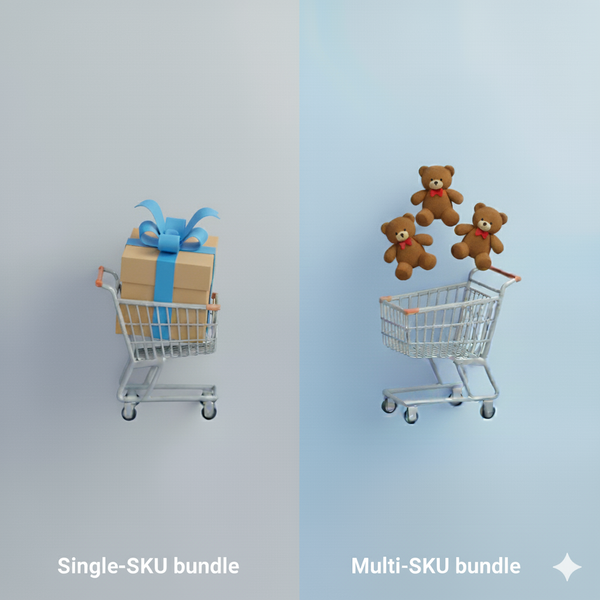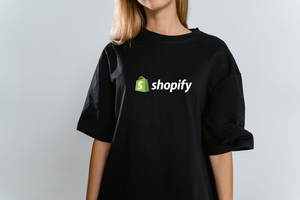It might seem like a small detail, but choosing the right bundling strategy can make a huge difference in how smoothly your online store and fulfillment operations run. Let’s break it down.
What are bundles, anyway?
A bundle is simply selling multiple products together as a single offering. Instead of buying a shampoo and conditioner separately, you can get them as a bundle product. Or perhaps a t-shirt, shorts, and hat become a summer multipack. Bundles are fantastic for increasing average order value, moving slow-selling stock, and giving customers a ready-made solution.
There are many bundle types—from fixed sets to mix-and-match collections. Merchants can offer bundle options that let customers select product options like size or color. With the right bundle app, you can also set up bundle sales that integrate seamlessly with your backend, POS, or fulfillment tools like ShipStation.
But how do you actually build these bundles in Shopify? That’s where the single-SKU vs. multi-SKU discussion comes in.
How do single-SKU bundles work?
You create a brand-new product listing in Shopify specifically for your bundle. This new individual product gets its own SKU. When a customer buys it, your bundle inventory system needs to track inventory across all the included bundle items so stock levels stay accurate. This also means that the bundle product and its components are identified by only one SKU during fulfillment. When a customer orders a bundle, you'll only see the bundle product, not its individual components. Many merchants use third-party-apps like Simple Bundles or other Shopify apps to automate this process. This option is best if your bundles are already pre-packaged and ready to ship, as your fulfillment team won't need to search for individual components. In addition, you can still choose to show the itemized bundle contents on packing slips, even if these items are not added to Shopify orders.
When are single-SKU bundles ideal?
- Your bundles are already pre-packaged and ready to ship
- You don’t have product pages for your bundle items
The downsides of single-SKU bundles
The challenge comes when one of the included items runs out. The bundle may still appear available, which can create overselling risks. That’s why good inventory syncing between your store and backend is critical. If you’re not careful, your bundle sales could misalign with your actual stock level.
How do multi-SKU bundles work?
With a multi-SKU setup, the bundle continues to be its own separate product, and functions as if linking the individual SKUs together. When a customer adds a mix & match bundle to their cart, Shopify still sees the bundle as well as the child items listed underneath.
When are multi-SKU bundles the better choice?
Choose multi-SKU bundles when:
- You want flexibility, like letting customers pick variations within match bundles.
- You want pricing logic, such as discounts when items are purchased together.
- You need detailed product details for the individual SKUs for picking and packing for your fulfillment teams.
Are there drawbacks to multi-SKU bundles?
For multi-SKU bundles, the child items within the bundle must be managed individually. This usually isn’t a problem, since most stores already track each product separately.
Which bundling strategy is right for your Shopify store?
So, how do you decide?
- Go single-SKU if bundles are already pre-packaged and ready to ship.
- Go multi-SKU if you need flexibility, customization options for bundle items, and seamless bundle inventory syncing and order fulfillment.
Ultimately, both strategies can be effective. Consider your catalog, your operational functionalities, and your goals. Using Shopify apps like Simple Bundles helps merchants build both single and multi-SKU bundles, whether they’re building SKU bundles for subscriptions, BOGO, B2B, multipacks.
With the right setup, you can create a bundling strategy that maximizes bundle sales, manages your variant limit, and delights customers across your online store and POS.





